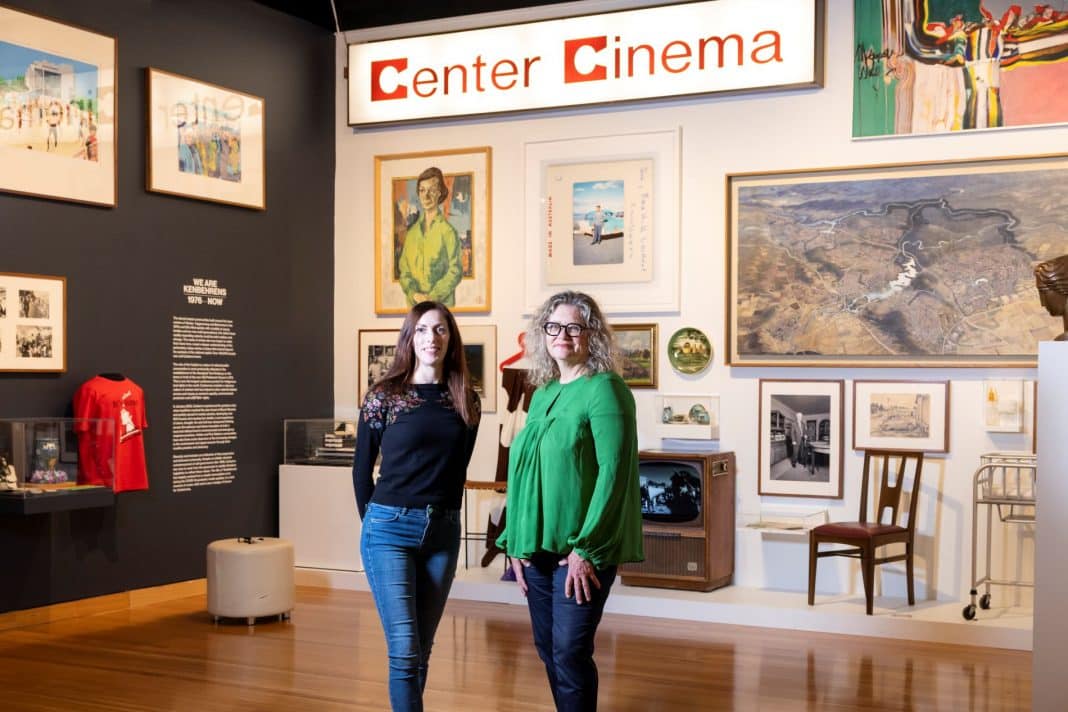We all know Canberra is the heart of the nation, but how much do we know about the people who helped to shape it? What were the stories of the first settlers, the punk-wave theatre artists, and the nurses who cradled babes in mid-century hospitals? Canberra Museum and Gallery explores the history of our city in Canberra/Kamberri, Place & People.
The idea for the new, ongoing exhibition was born out of the pandemic, when people couldn’t travel and were looking for things to do close to home. The team at CMAG realised there was a huge gap in the market; we have world class museums and archives that show histories, international artists and storytellers of all kinds, but nowhere was telling the story of Canberra.
Canberra/Kamberri, Place & People tells the story from both a visual arts and social history perspective, with objects dug out from the museum’s 12,000-plus reserve. See the dress one of Canberra’s first settlers wore while riding her horse, displayed just paces from the dress worn by a Canberra woman representing Australia at the 1984 Los Angeles Summer Olympics. Works of art have been chosen for not just their aesthetic value but also the story they tell, while household items, posters and advertisements give an insight into moments in time.
“Every object has a story and that’s what we have really tried to do in this show … just observing people in the gallery chatting with their friends and reminiscing about an object that triggers them to think about a memory, I think that’s really important and lovely,” says Hannah Paddon, senior curator, social history of Canberra/Kamberri, People & Place.
Ms Paddon and Virginia Rigney, senior curator, visual arts at CMAG, worked to bring their areas of expertise together to offer a place where audiences will find something relatable. Whether you have lived here forever or have just arrived, Ms Rigney says the exhibition is a great opportunity to see how you can make your life here through the story of others who already have.
“I think Canberra has been a place where people often come to make their lives … and, I think for many people, actually finding your home in Canberra can not necessarily be an easy thing,” she says.
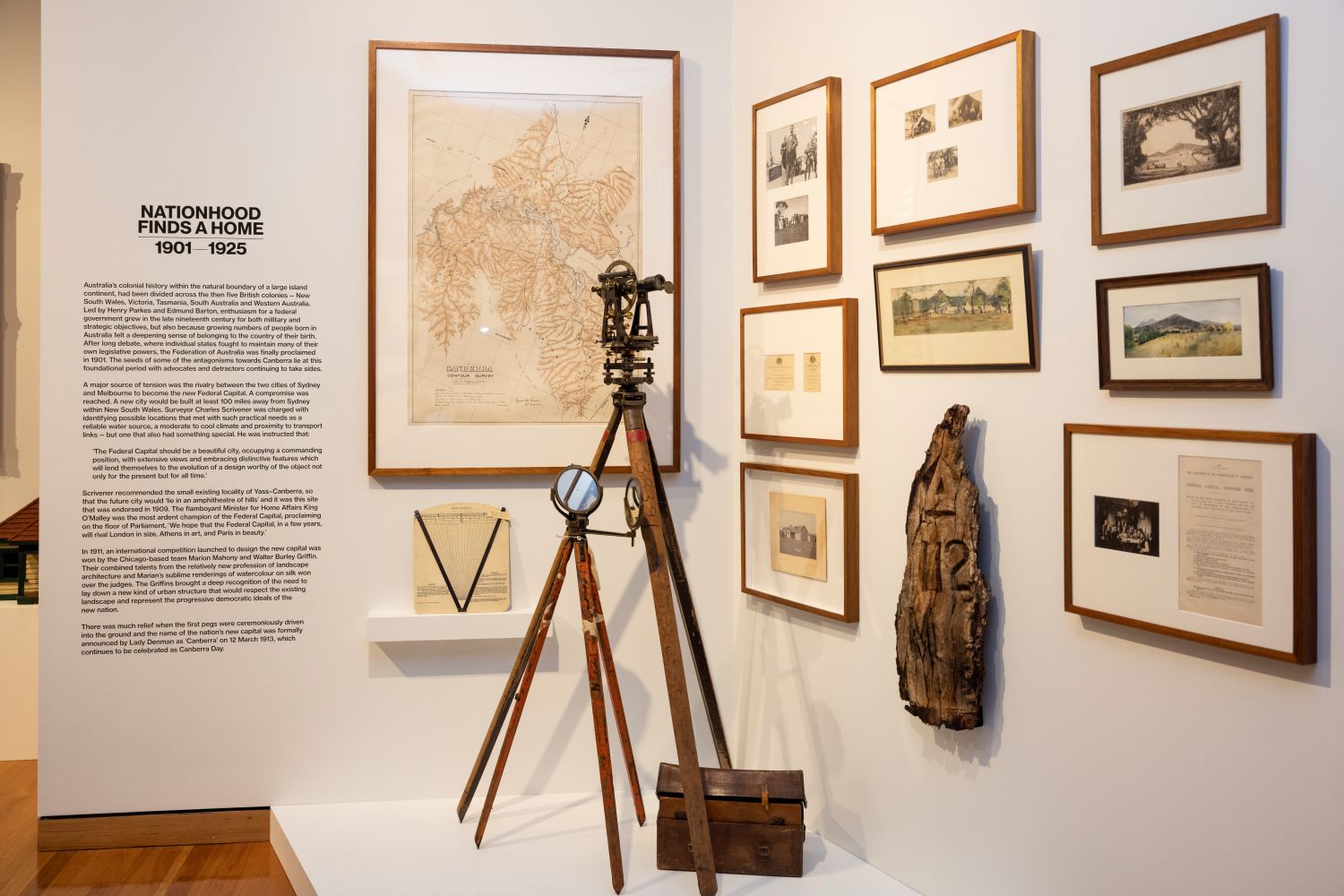
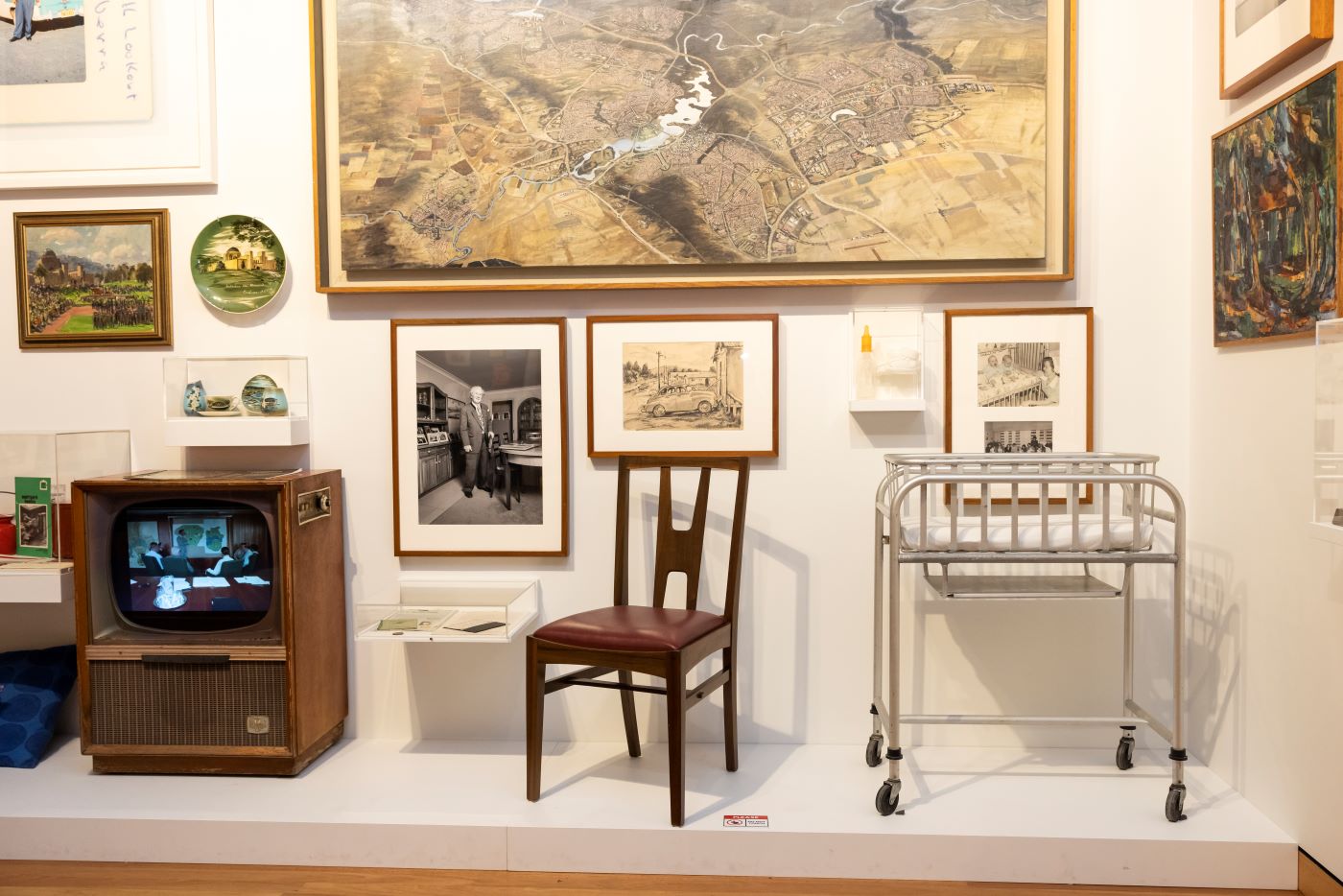

The curators represent both sides of the coin; Rigney was born here the year before Lake Burley Griffin was filled. Her parents came to the region in the early 1950s for work and school. After 30 years away, her hometown drew her back.
“There would be thousands of couples who met and married [here], it is actually one of the stories in the exhibition; it is the bachelors and spinsters and what went on in all those different hostels,” Ms Rigney says.
While Ms Paddon only moved to the region about two years ago, she says she is loving the tranquility of Canberra and the vibrancy of the cultural life here.
“There are some synergies with my hometown; Canberra being a planned city, Plymouth was pretty much demolished in the Second World War so it was rebuilt from the ground up. It was really interesting to see those contrasts as I’ve been learning more about Canberra’s history,” she says.
From the sacraments of spirituality to the items that made the COVID pandemic more bearable, Canberra’s history is captured through art and objects. The exhibition follows the history of Canberra chronologically; walking through the glass doors you are met with items of the first people who inhabited the land, the Ngunnawal People.
Opposing walls display remnants of settlers, such as tools of the trade used by local smithies. From there, we visit the establishment of Australia’s capital and the fight between Sydney and Melbourne about location, with Canberra ultimately taking the title. We see the Territory built and communities and culture start to emerge. Objects capture moments of activism, our highs, and our tragedies.
“The bush capital isn’t just all about having nice bits of green around it, there’s anxiety about drought. This painting by Mandy Martin was done in 1983; she’s aware then that people were building gargantuan water tanks because of that drought that never got filled. Artists are like canaries, they can see things early,” says Ms Rigney.
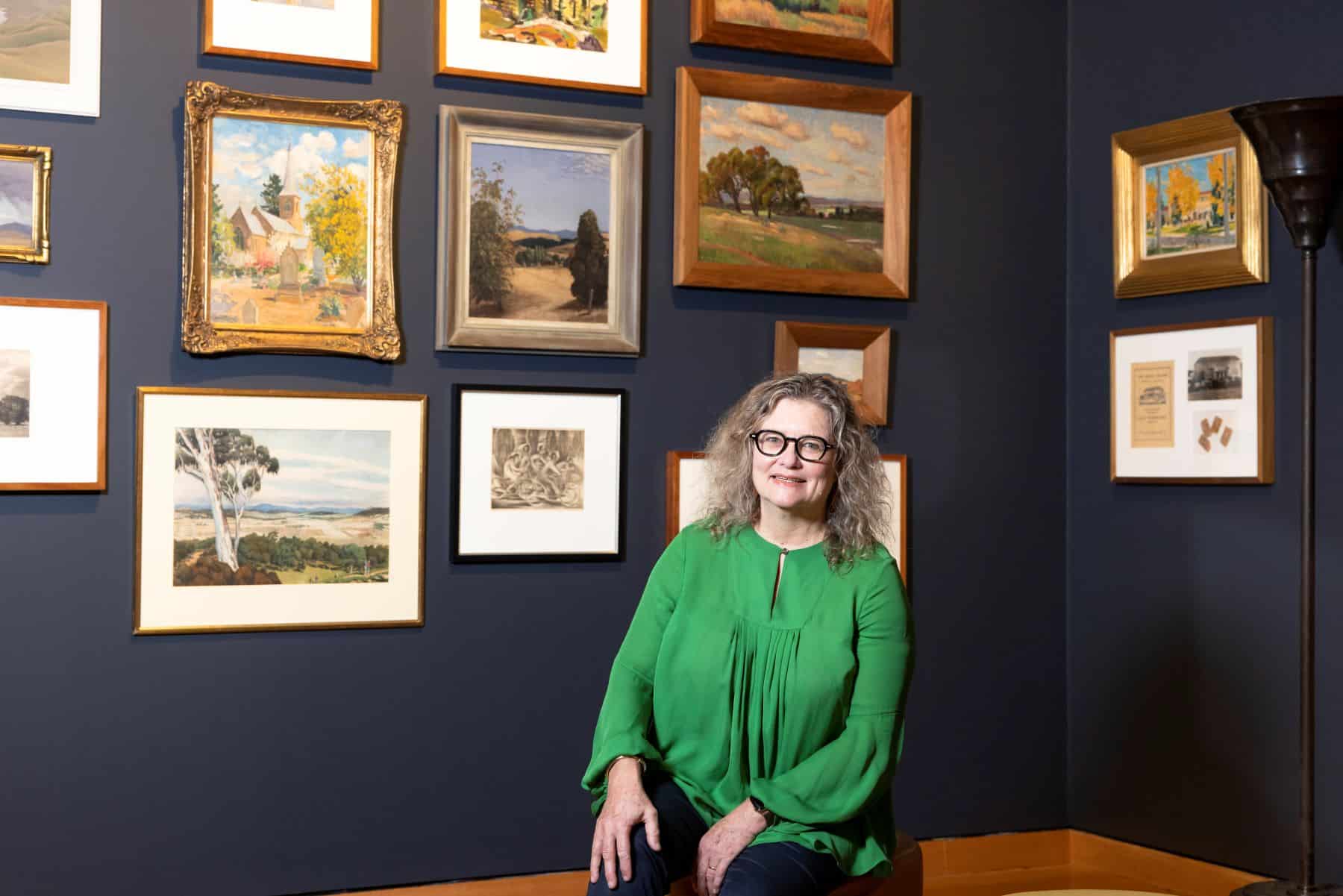
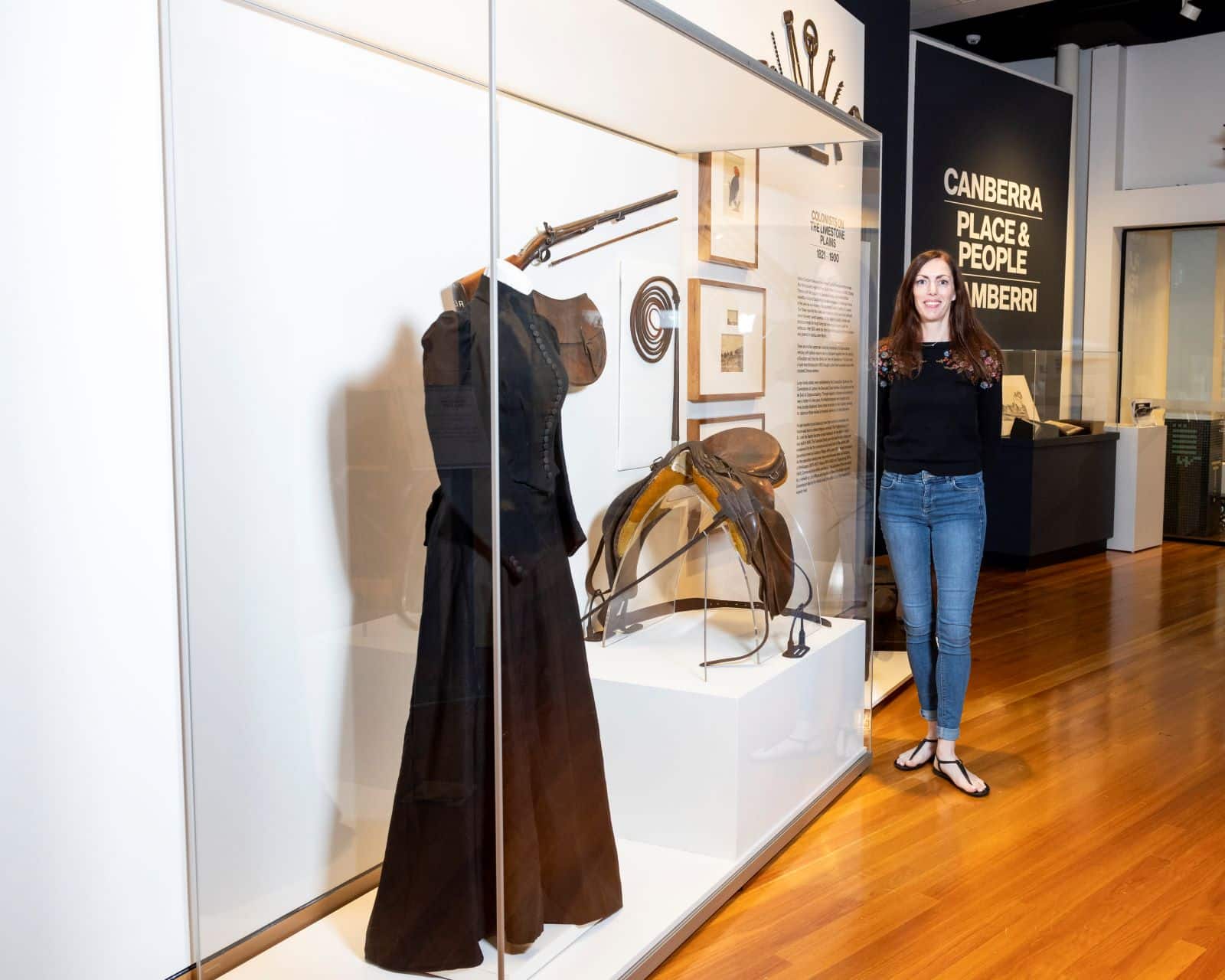
Moving image plays an important role in the exhibition, with screens reflective of the era. Catch a silent film, a short episode on a black-and-white television, or scroll through a modern device to learn more about the items on display.
When visiting the exhibition, the curators say you probably won’t be able to delve into all the stories in one go, it is something with many layers to be pulled off. One single item may tell multiple stories, and they’re hoping that people will want to be engaged with the items, some of which can still be found around town.
“Where is it in Canberra? Go and find it! We really would love it if people can do that in their social media, find those places that are depicted in the exhibition,” says Ms Rigney.
The women say the museum is always on the lookout for new acquisitions. If a family with a strong connection to Canberra would like to share their story, they are encouraged to contact the team. Send an image of your item, a short story about it, and how your family is connected, to the email address on the website.
“During COVID, there’s been a lot of people going through their family kind of stuff. It takes a lot for us to consider to acquire things but we’d really prefer if people approached us and let us know what they have rather than just throw it away,” says Ms Rigney.
Uncover local history in Canberra/Kamberri, Place & People at Canberra Museum and Gallery; cmag.com.au
Get all the latest Canberra news, sport, entertainment, lifestyle, competitions and more delivered straight to your inbox with the Canberra Daily Daily Newsletter. Sign up here.

